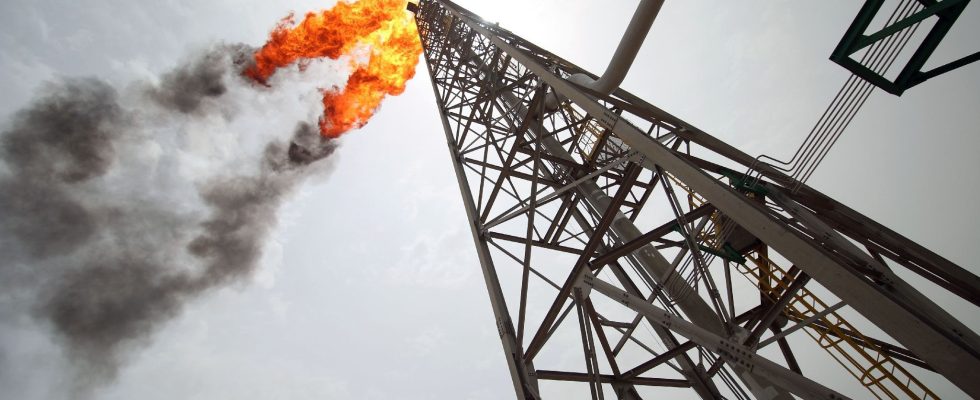Will the predictions of the International Energy Agency (IEA) come true? On September 12, in a tribune published on the website of Financial Times, its director Fatih Birol hailed a “historic turning point” and the “end of the fossil fuel era”, estimating that the consumption of coal, oil and gas would begin to decline during the current decade. The reason is the rapid growth of renewable energies and the electrification of transport, two powerful brakes on global demand for black gold. This is not the first time that Fatih Birol has warned us of this coming shift. Earlier in the year, the Turkish economist estimated that oil demand could slow down worldwide as early as 2028.
But can we really believe it? Doubt is allowed. The exit trajectories of fossil fuels, and in particular oil, will depend on compliance with the decarbonization plans implemented in the different countries. However, the success of the latter is not yet certain.
“The IEA scenarios are very serious, but they are based on a pile of hypotheses. Will they evolve in a favorable way? For the moment, no one can say,” notes Ines Bouacida, energy-climate researcher at the Institute of Sustainable Development and International Relations. Political hazards, for example, can easily call into question national climate strategies. “It is enough for conservative governments on climate issues to retain, or take power to put off indefinitely the hopes of effectively weaning off oil,” adds Matthieu Auzanneau, director of the think tank The Shift Project.
OPEC’s doubts
And that’s not the only problem. The end of oil will also depend on the ability of States to decouple their global economic growth from their energy consumption. “The big difficulty is that when we are discussing trajectories, global GDP is growing, and so is energy consumption,” underlines Emmanuel Austruy, associate director at the Boston Consulting Group. For many economies around the world, development therefore requires energy sources that still contain carbon. The energy transition requires that this new energy demand be compensated by renewable sources, but also that energy efficiency be much greater than today in order to reduce the increase in demand.
“All decarbonization scenarios include a very ambitious energy efficiency parameter. However, where this has already contributed well, very significant efforts will be required and contain a lot of uncertainty,” tempers Emmanuel Austruy. Already in 2020, at the time of the coronavirus crisis, the shutdown of the global economy suggested that the peak in global oil demand had just been reached. However, the strong rebound in post-Covid activity quickly swept away hopes. In 2023, the IAE itself highlighted that global oil demand could reach 102.2 million barrels per day on average, the “highest level ever recorded”.
Primarily concerned, the oil-producing countries continue to display unfailing confidence. Last year, the Organization of the Petroleum Exporting Countries (OPEC) estimated in its annual report that global oil demand would not reach its peak before… 2040! It could even plateau for another 20 years. Especially since, according to these producing countries, quickly escaping fossil fuels would prove “dangerous” for global energy security.
Peak gasoline demand in China
Another revealing figure: investments by the oil and gas industry for exploration and production could rise to $528 billion (or 484 billion euros) this year, an increase of 11% compared to 2022. As thumbing its nose at the IEA’s predictions, Total has just formalized a mega oil project in Suriname, in South America. This should allow the group to exploit a whopping 200,000 barrels of oil per year by 2028, or around 10 million tonnes.
“Demand continues to be high and will continue to be significant even once the decline begins, which forces oil players to continue their investments to meet this demand,” explains Benjamin Louvet, director of raw materials management at OFI Asset Management. “The only change is that oil companies are now looking for much shorter profitability for their new investments, i.e. four or five years, with the aim of reducing the share of assets that could become useless in the long term,” continues the analyst.
In this ocean of oil, the IEA still sees some good news: investments in renewable energies are showing permanent and rapid growth. “Our latest projections show strong growth in electric vehicles around the world, particularly in China. This means that oil demand is on track to peak before 2030,” insists Fatih Birol. Within the Middle Kingdom, industrialists are even very optimistic. In August, the country’s largest fuel distributor estimated that demand for gasoline for transportation could have peaked in 2023, with the deployment of electric and plug-in hybrid vehicles helping to replace 15 million tons of petroleum products by that time. year.
Good news certainly, but which does not carry much weight in the global climate equation. A study published on September 13 in Nature Communications showed that to limit warming to 1.5°C (the objective of the Paris Agreement in 2015), international oil production would have to fall by 62% between 2020 and 2050.
